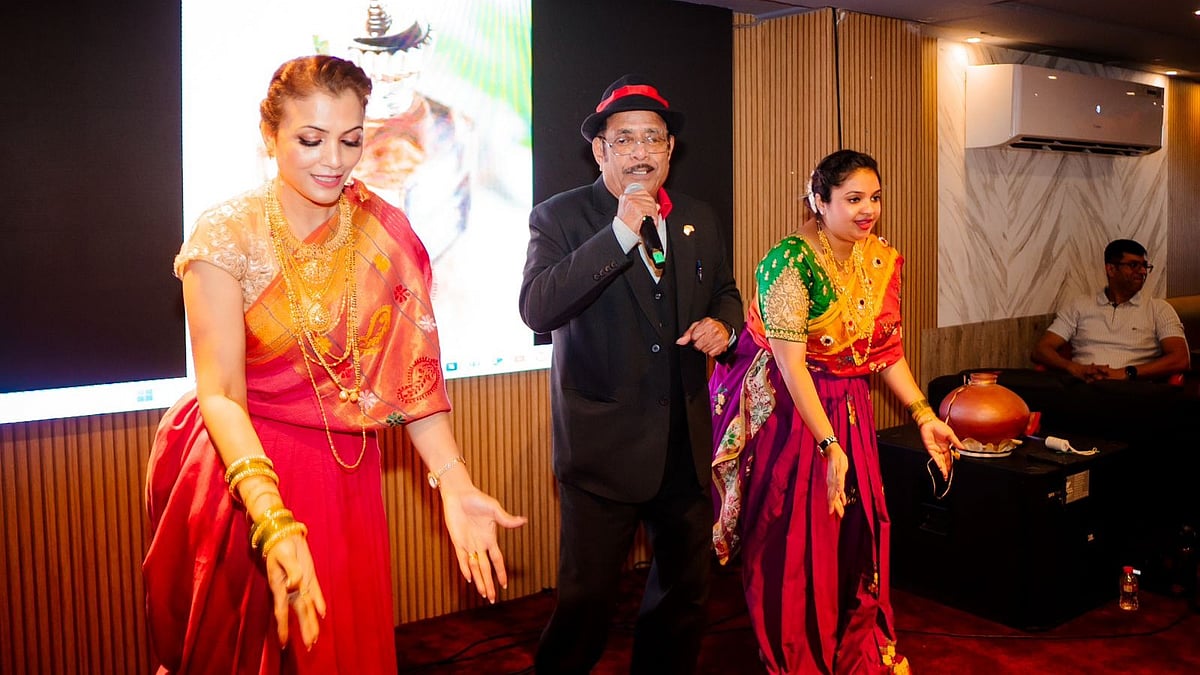No wedding is complete without the iconic East Indian song Paskin. The moment the song is played, even those seated at their dinner tables, join in this master blaster of a song, dancing to Crompton Texeira’s Paskin Paskin. The rhythm, the beats, the fusion of East Indian vibes are fused so well that you cannot help dancing to it.
So who is Paskin? The best person to answer it would be Crompton who composed the song. “Paskin began as a fading memory of an old, slow sleepy song” says Crompton, humming the slow song while adding that “an 85-year-old neighbor, Savi Miranda, asked me if I knew it. Though the lyrics eluded me, inspiration struck when I met a beautiful woman named Paskin in Vile Parle. She became the muse for what is now a cherished anthem” says Texeira who despite initial struggles, waiting almost five years without support or sponsors, made the song Paskin a phenomenon. To date, the Paskin lyric video is the first ever East Indian song that has crossed over 4 million views globally. Crompton dreams of creating a new video for the song, but is still searching for sponsors to bring his vision to life.
Crompton met up with producer – musician Hyacinth D’souza who was already working on his series ‘Majem Varad II’, which featured several foot-tapping songs, including Paskin. Drawing on his experience with dance songs, D’souza decided to give it a modern, upbeat sound with East Indian beats, creating a fresh style for the community.
“I was given the melody for Paskin, but had to conceptualize the style and arrangement independently. The song was entirely produced on a keyboard, using virtual sounds for drums, brass, guitars, and punchy elements for a dynamic rhythm. I added a catchy hook line with a catchy bass line, brass ensemble, organic sounds like marimba, ethnic instruments like the ghumat and many other percussion instruments to get the right vibe for this song”, recalls D’souza who has been honored multiple times by the Mobai Gaothan Panchayat (MGP), (an organisation which is the voice of the East Indian community, the original inhabitants of Mumbai) with the East Indian Community award for his Contribution to Music.

Texeira says that it was literally a dream to actually come up with the tune and lyrics. “When I had the tune in my mind, the lyrics were confusing me. When I compose a song, I first think of the tune and then I put the lyrics to the song. So here I imagined I had fallen madly in love with Paskin, I imagined she was at my door, sitting on the swing in my verandah, a woman in an East Indian sari with a tiara on her head, and inviting her to my house”, jokes the 78 year old who has in the past sung with the Paranjoti choir, been a judge for numerous music competitions and was recently awarded a Lifetime Achievement Award for his Excellence in Singing and Music by the Vakola East Indian Dramatic Club.
Hailing from a family deeply rooted in music, Texeira’s journey is nothing short of extraordinary. Born into a family where every member was a singer including his parents, Crompton was the third of eight siblings and moved into music serenading teachers in classrooms, singing in the church choir, and serving as a lector for over 55 years, which he says was his foray into music.
While on my telephone call with him, Texeira suddenly breaks into the song with words that go….Paskin, Paskin Paskin Chea Parlai Yo Dostin, Ubhi Re Go Dara, Jeev Maaza Kailas Tujun Vera……..Paskin che vatyavar hai zalla, Paskin che baapala hai bangala….Paskin, Paskin, Paskin che baapache shetkari, paschin che ghar pam pam gari…. (laughs) So basically I’m talking about Paskin whose father has a bungalow, her father has got fields and farms, a car, Paskin is fair and has a beautiful face, so I’m asking Paskin to please come to my house. It’s all in good humor and a fun song”.
D’souza who has worked with prominent Bollywood music directors on background scores for films and web series and recipient of Radio Mirchi and GIMA awards for Best Music Arranger, feels the song’s catchy brass hook melody of the word Paskin and East Indian beats combined traditional sounds with a modern approach, give the song its needed impetus to make it an out and out dance piece. “Backing vocals harmonies using melody thirds and fifths featured a group of female singers like Maria Gigool, Dollas and Selma Gomes, Mariett Kinny, Flavia Soares, with the main vocals sung by Crompton Texeira and Cyrus Soares” reveals D’souza while adding that all backing vocals were recorded individually with post-recording involving pitch correction, alignment, equalization, compression, and mastering to achieve clarity and balance.
Commenting on the song’s immense success, Gleason Barretto, MGP Global Ambassador says that the song is one of the most popular songs in the East Indian community as well as amongst other communities in Maharashtra. “Credit goes to both Crompton and Hyacinth who revived this old song”.

Crompton’s contributions to music, particularly East Indian culture, have been nothing short of transformative. He has garnered countless press accolades for his folk songs, received multiple awards for music from MGP, the main ones being for his Christmas carol album ‘Natal’ and Best Composer for Paskin. In November last year alongwith Hyacinth D’souza, he released Taraka, a 10 song East Indian Medley that blends popular old folk East Indian classics. To date the song has crossed 1 lakh views and continues to grow in popularity.
“Paskin and all my other musical work is my contribution to the East Indian community. I have 20 songs which I hope to bring to life, to share my music with the world, rather than letting it fade away”, signs off the Kalina resident, who has travelled the globe along with his band to promote East Indian music and culture.
